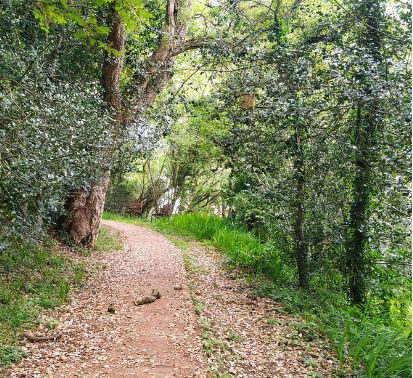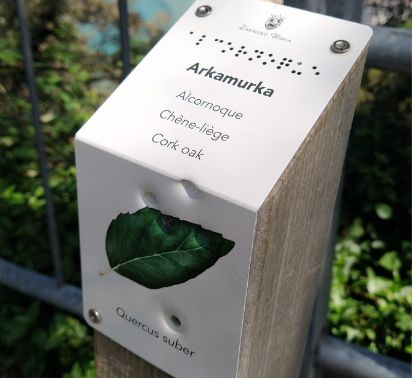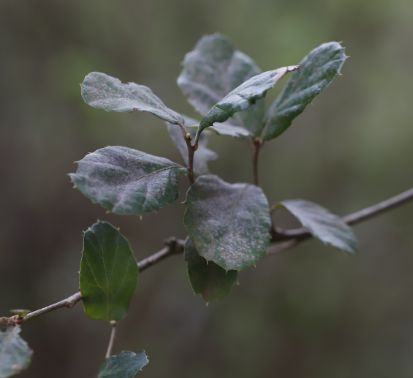Now we're going to stick to the tree that's left of the road. Do you remember that in this ZEC Garate-Santa Barbara we have highlighted a kind of protected tree? Here's a good sample.
Both our view and touch will irremediably address the trunk of this particular tree... In fact, what you're seeing or touching is cork. If we look at the leaves, it is easy to confuse it with the oak, but its name in Basque (artelatza) will clarify all the doubts, as it is formed by the term art (oak) and latza (rough), although in Zarautz it is known as arkamurka. Its scientific name (genus Quercus and suber species) tells us that it is a tree of the oak family, with a trunk whose surface is covered with dead tissues that protect it.
This dead tissue is what makes cork, a perfect insulation material to protect the tree from water loss and fire. It must be borne in mind that this is a Mediterranean tree prepared to withstand water scarcity and high temperatures. In that case, how do we find it here, on the Cantabrian side? It is believed that these are forest remnants which, in the last warmer times, covered larger areas.
We have already said that in this area between Getaria and Zarautz we will find 75% of the cork oak trees in the Basque Autonomous Community. However, we must bear in mind that the presence of this species is rare and punctual. For this reason, it is a tree that is included in the Basque catalogue of threatened species of wild and marine fauna and flora in the group of Special Interest Species. Let us keep these plant treasures that have lasted to this day. If you want to rest take advantage of these benches, to reach the next stop with the renewed forces. Then, at the junction, we will take the right path to avoid the stairs.







